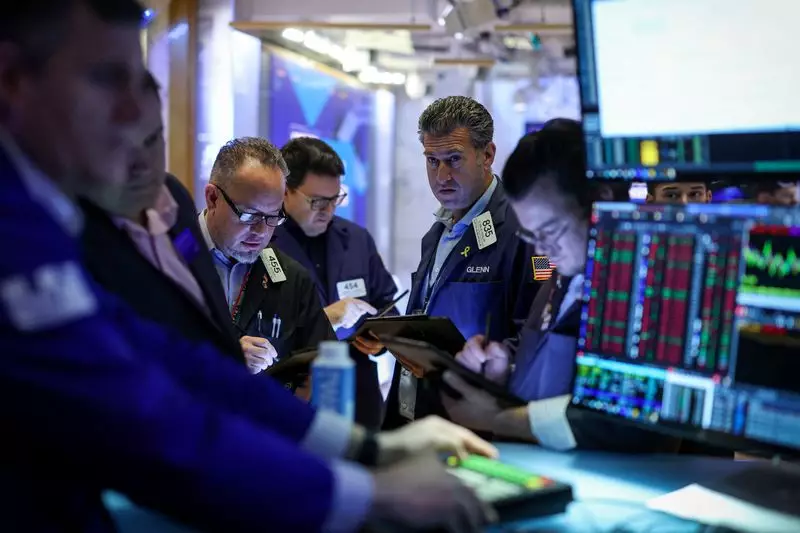As Wall Street anticipates another tumultuous trading day, concerns surrounding high-interest rates loom large over the market. The latest fluctuations in stock prices stem not only from macroeconomic indicators but also from political maneuvers in Washington, adding layers of complexity to an already precarious situation. The fear of soaring interest rates next year casts a long shadow over investor sentiment, despite a slightly comforting inflation report that could mitigate immediate losses.
The Commerce Department’s report on the Personal Consumption Expenditure (PCE) index—the Federal Reserve’s chosen metric for gauging inflation—revealed a year-over-year increase of 2.4% in November. This figure, while a touch below economists’ predictions of 2.5%, still reflects an economy that has not fully escaped the clutches of inflationary pressures. The market’s reaction to this data was palpable; traders adjusted their expectations for potential interest rate cuts in 2025, with some now anticipating reductions as early as March and another by October.
The Federal Reserve’s recent signals have left investors grappling with mixed messages about monetary policy. For instance, the Fed’s forecast of only two rate reductions in 2025, coupled with an upward revision of its inflation outlook, suggests that officials remain vigilant about inflation’s persistent hold on the economy. Mike Dickson, the head of research and quantitative strategies at Horizon Investments, succinctly summarized the sentiment: the battle against inflation is far from over.
This sense of uncertainty has led to a cautious approach from prominent figures within the Fed, such as San Francisco Federal Reserve Bank President Mary Daly. Her comments affirm the notion that any decisions regarding future rate adjustments will require careful consideration, reflecting broader economic conditions rather than a purely reactive stance. Investors must continually adapt their strategies, straddling the line between optimism about growth and caution due to fluctuating interest rates.
Adding fuel to the market’s precarious situation is the ongoing struggle within Congress to avert a partial government shutdown. With a midnight deadline approaching, partisan disagreements—specifically between President-elect Donald Trump and a faction of Republicans—threaten to halt government operations. Paul Christopher from Wells Fargo offered insights, suggesting that a new spending agreement before the deadline seems unlikely but hinted at the potential for a forthcoming bill by year-end to bring some level of financial stability.
Such political uncertainty invariably spills over into the stock market. Historically, gridlock in Washington leads to unease among investors, who become wary of the implications for economic policy and fiscal stability. The anticipation of a shutdown contributes to the downward pressure on the Nasdaq, which is on track to register its first decline in five weeks, while the S&P 500 appears poised for its worst week since September.
Despite the doomsday forecasts, there remains a surprising degree of resilience in the stock market. Analysts project gains for the larger stock indices into the next year, with optimistic year-end targets for the S&P 500 ranging between 6,000 and 7,000, though the index is currently hovering around 5,900. As the market grapples with this volatility, individual stocks reveal mixed fortunes during premarket trading, with major players like Tesla, Nvidia, and Amazon showing declines of about 1%.
However, not all stocks are experiencing the pressure. FedEx made headlines with an impressive 8.2% jump after announcing the spinoff of its freight trucking division—an operational shift aimed at sharpening its focus on delivering core services. Similarly, Eli Lilly displayed resilience; its shares rose 6.4% following poor trial results from a competitor’s weight loss drug, showcasing how market dynamics can pivot dramatically based on company-specific news.
Wall Street finds itself entrenched in a complex interplay of economic indicators, interest rate expectations, and legislative negotiations. Investors must remain agile, balancing their strategies against a backdrop of fluctuating inflation rates, potential government shutdowns, and sector-specific performance. As we move toward the new year, the ability to parse through these signals will determine market fortunes, making it imperative for stakeholders to stay informed and prepared for further volatility. The road ahead promises to be anything but straightforward.

